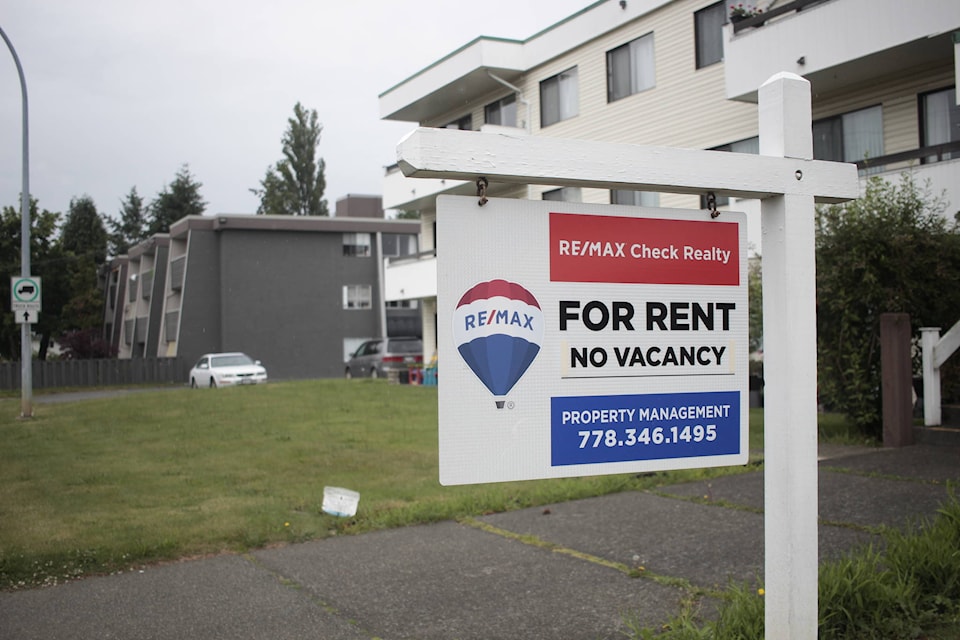Intensification and diversity are the two main themes for Campbell River’s response to the housing crisis, according to a report published earlier this month that came from the Campbell River Housing Workshop held last fall.
“if you look at Campbell River, there are a lot of single-family homes,” said Cleo Corbett, a planner with the city.
Part of the planner’s job is to look within existing zoning for “opportunities where we can gently increase the density so that we’re using infrastructure efficiently and also providing more housing options and increasing our housing.”
Corbett’s job is to look specifically at housing, community development and supports for people in vulnerable situations, liaising with the city to ensure collaboration. Housing has consistently been one of the top priorities for the city, she explained.
“We saw a huge jump in housing prices from 2016 onward,” she said. “As of 2019, we saw 60 per cent increase in the value of single-family homes, and 100 per cent increase in the value of condos and multi-family units. Of course, at the same time, income levels did not go up.”
“We have the lowest rental vacancy rate on Vancouver Island, and the second-lowest vacancy rate in the province,” she added. “We have a lot of people moving here, and with the popularity that we’re seeing comes benefits, absolutely, but also a lot of challenges.”
Intensification refers to increasing density, which is usually accomplished by changing zoning laws and official community plans to allow more people to live in the same amount of space. Examples include allowing secondary suites or carriage houses in existing plots of land. The map of Campbell River’s property zoning shows a majority of land used for housing is allotted to single-family homes. Under single-family dwelling zoning, only one dwelling unit is allowed on the lot, which forces people to live in larger homes and have larger yards than more dense zoning would. City Council has expressed an interest in pursuing secondary suites, and have directed planning staff to look into an efficient process for approving them.
“Every municipality is quite concerned with asset management, ageing infrastructure and wanting to use our infrastructure responsibly,” Corbett said. “We’re always looking for ways to use our land more efficiently so that we’re using our infrastructure more efficiently as well. Are there opportunities to look at densification in the sense of duplexes, triplexes, fourplexes and row housing?”
The city has also been working closely with BC Housing to bring more non-market housing into the city. Non-market housing means housing that is protected from normal market forces. This can include housing co-ops, land trusts and non-profit housing corporations, and is essentially a step away from the typical rent or buy options that dominate housing today.
“We know that Canada as a whole has a very small percentage of non-market housing,” Corbett explained. “If you look at communities in countries in Europe, they have quite a high percentage of non-market housing. We just don’t.”
In all, an increase in intensity and in diversity should provide more housing options for people in the city.
“Just like a healthy garden has biodiversity, a healthy housing market has a lot of diversity as well. We will be looking to bring more variety forward, but that’s part of that housing growth process.”
While the city has taken steps towards intensification, there are a lot of factors to consider in ensuring the city has enough room to support population growth into the future.
“Policy changes take time. Change can also be hard for communities. It’s important to have the discussion at a community level about how and where we grow [and] that a community decides that together. Then once the policy changes happen at a city level, then we also need to ensure that our regulations are there to catch up and even incentivize that kind of change in land-use patterns and densities,” she said.
RELATED: Indigenous Housing a priority for Campbell River and area – report
Rental vacancy rates last year hit lowest since 2002 after third year of decline
